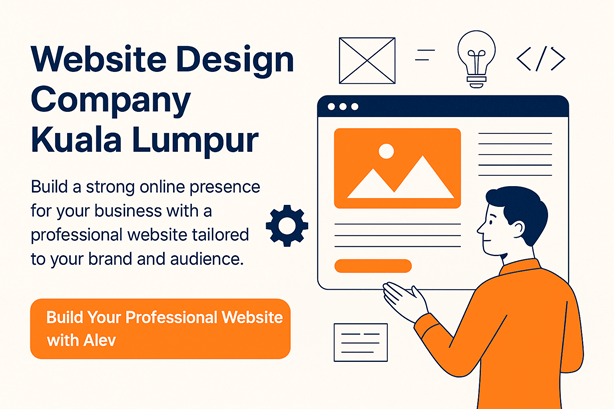There’s a significant influence that typography holds in modern packaging design. You may not realize it, but the choice of font, style, and composition can greatly impact your brand perception and consumer engagement. In this post, you will discover how effective typography can elevate your packaging, convey your brand’s message, and enhance the overall aesthetic appeal. Understanding these elements will empower your design decisions and help you stand out on crowded shelves.
Typography as a Visual Language
Typography transcends mere text presentation; it acts as a visual language that communicates emotions, tones, and brand stories. By selecting specific typefaces, you can convey messages and set the mood even before a customer reads the words on your packaging. Distinct fonts evoke different feelings, making typography a powerful tool for creating an immediate connection with your audience.
The Psychology of Fonts
Each font carries its own psychological weight, impacting how consumers perceive your product. For example, a serif font often evokes a sense of tradition and reliability, while a sans-serif font might suggest modernity and simplicity. By understanding these associations, you can strategically choose typefaces that resonate with your target audience’s feelings and expectations.
Communicating Brand Identity Through Type
Your choice of typography significantly shapes your brand identity, acting as a silent ambassador that conveys what your brand stands for. For instance, Coca-Cola’s cursive logo instantly evokes nostalgia, blending both classic and approachable elements that elevate its identity. A well-thought-out typeface helps you differentiate from competitors and fosters brand recognition, solidifying your place in customers’ minds.
Delving deeper into the impact of type on brand identity, consider how several brands have successfully utilized typography to enhance their narratives. Airbnb’s rounded, sans-serif typeface conveys friendliness and ease, inviting users into a community-oriented space. Similarly, luxury brands often opt for sleek, serif fonts to communicate sophistication and exclusivity. The ability to tailor your typography to reflect the essence of your brand not only reinforces your identity but also resonates with consumers on a deeper emotional level. Understanding this connection enhances your ability to craft packaging that draws customers and leaves a lasting impression.
Contrast and Clarity: Essential Considerations
Effective packaging design hinges on contrast and clarity, ensuring that the type not only stands out but also conveys your message effortlessly. High contrast between text and background colors, for example, helps catch the eye and enhances readability, allowing consumers to absorb vital information quickly. Additionally, ample whitespace can alleviate visual clutter, creating a focal point on the typography that draws attention. Keep in mind, packaging that boasts both contrast and clarity can propel your product into the hands of overwhelmed shoppers, who may otherwise overlook your offerings in a crowded market.
The Impact of Color and Size
Color and size play pivotal roles in creating effective typography on packaging. Bold, vibrant colors immediately attract attention and evoke specific emotions associated with your brand. Pairing these colors with appropriately sized typography ensures your message is not just seen but understood. For instance, oversized headlines can grab attention from afar, while smaller details might be reserved for vital ingredients or instructions. When harmonized correctly, color and size enrich the consumer’s experience and your product’s marketability.
Legibility vs. Aesthetic Appeal
Finding the right balance between legibility and aesthetic appeal can pose challenges for designers. While stunning, unconventional typefaces can elevate your packaging’s visual allure, they may sacrifice readability in the process. The best designs prioritize clear communication—that means ensuring important information is easily readable while still aligning with your brand’s desired aesthetic. For example, luxury brands often favor elegant scripts that convey sophistication, yet they must ensure even the tiniest details are legible to communicate effectively with discerning consumers.
A stunning typeface can enhance the visual identity of your packaging, but it’s vital to weigh the importance of legibility. Your audience may appreciate aesthetic innovation, but if they can’t read your product name or vital instructions, their purchasing decision may falter. Striking a harmony between creative typography and clear readability is often achieved through deliberate selections in typeface choice, size, and spacing. An effective way to assess this balance is through consumer testing, which can reveal whether prospective buyers find your fonts appealing and comprehensible. Ultimately, maintaining clarity while also capturing attention through aesthetics will solidify your brand’s presence in a competitive market.
Balancing Trends with Timelessness
Finding the equilibrium between current design trends and enduring aesthetics requires a nuanced approach. You want your packaging to resonate with contemporary consumers while maintaining a sense of lasting appeal. Striking this balance ensures that your brand can adapt to shifting market dynamics without the risk of becoming obsolete. This synergy allows your products to feel relevant today while still possessing the potential to stand the test of time.
Analyzing Current Typography Trends in Packaging
Current typography trends in packaging are characterized by bold sans-serifs, playful scripts, and minimalistic designs. These styles convey a sense of modernity and accessibility, appealing to a wider audience. For instance, brands like Coca-Cola utilize vintage-inspired scripts that evoke nostalgia, while newer companies leverage vibrant and quirky fonts to capture attention. Staying updated on these trends can significantly enhance your product’s shelf presence.
The Importance of Longevity in Design Choices
Opting for designs that endure beyond fleeting trends will protect your brand from becoming dated. Timeless typography resonates with consumers on a deeper level, creating a sense of trust and familiarity. As your brand evolves, leveraging perennial design elements can create consistency in your brand identity. Think of iconic brands like Apple or Chanel; their clean, simple typography has remained cohesive through decades, allowing them to adapt while still retaining recognition and affection from their audience.
This longevity reinforces why employing reliable typography choices is vital in today’s fast-paced world. Consumers may become weary of brands that constantly switch their visual identities, finding comfort in those that retain recognizable elements over time. A well-crafted, timeless typographic design not only sets you apart but can also foster brand loyalty, as customers develop an emotional connection with recognizable fonts and styles. Aligning your design with both contemporary trends and a timeless flair assists in building this enduring relationship with your audience.
Innovative Use of Typography in Packaging
Innovative typography can elevate your packaging from ordinary to extraordinary. Choosing the right typeface, size, and layout not only conveys necessary brand information but also impacts consumer feelings and behavior. Bold, experimental font choices can attract attention on crowded shelves, while elegant and minimalist designs tend to evoke feelings of luxury and sophistication. By leveraging variations in typography, you create a visual hierarchy that guides consumers, helping them quickly identify key elements of your product. This approach sets the stage for a distinct and memorable brand identity.
Case Studies of Brands Leading the Way
Several brands have successfully harnessed innovative typography, setting benchmarks in packaging design that highlight the effectiveness of their strategies.
- Coca-Cola: Their “Share a Coke” campaign utilized type personalization, resulting in a 7% increase in sales in the U.S. due to direct consumer engagement.
- Heinz: Their modern minimalist text on ketchup bottles emphasized simplicity, leading to a 20% increase in packaging recognition among consumers.
- Method: The eco-friendly cleaning brand embraces playful typography on uniquely shaped bottles, boosting social media engagement by 50% through distinctive designs.
- Blue Bottle Coffee: Their use of clean, sans-serif typefaces creates a calming presence, leading to a 30% increase in online sales.
Lessons from Industry Disruptors
Examining brands that have radically transformed their markets reveals invaluable lessons in typography. These disruptors have learned to tailor their fonts to align with consumer emotions, creating visual narratives that resonate deeply. Personalization, for example, not only captures attention but also forges a connection between the consumer and the brand, increasing loyalty. Additionally, embracing modern technology, such as digital printing, allows for flexibility in font styling and size, further enhancing the customizability of packaging. Understanding these strategies can empower you to create distinct packaging that stands out in a competitive landscape.
The Future of Typography in Packaging Design
As the design landscape evolves, typography will play an even more instrumental role in packaging. You can anticipate a blend of physical and digital experiences, where augmented reality (AR) links with typography to create interactive labels that engage customers. Exploring The Role of Typography in Brand Design will provide insights into how these trends will shape consumer connections and brand loyalty.
Predictions for Emerging Technologies and Trends
The rise of artificial intelligence and machine learning in design software will streamline the typeface selection process, providing suggestions that resonate with target demographics. Custom typefaces generated in real-time based on consumer data will lead you to designs that truly resonate, bridging preferences and brand identity like never before.
How Sustainability Influences Typography Choices
Your typography choices will increasingly reflect a commitment to sustainability, aligning with consumer values. Brands are adopting eco-friendly materials and methods, which can also extend to the fonts they choose to use. For instance, selecting typefaces that require less ink can enhance the eco-friendly message of your packaging.
Incorporating sustainable typography goes beyond just choosing eco-conscious materials; it’s about aligning your brand story with sustainability efforts. Brands like Coca-Cola and Unilever have led the charge, selecting typefaces that reduce ink usage—think thinner strokes and minimalistic designs. As consumers are becoming more eco-aware, you’ll need to ensure your typography communicates transparency and responsibility while enhancing your packaging’s visual appeal. With more brands committing to sustainability, the challenge is to integrate these values into your typography effectively, ensuring it complements your overall brand narrative.
To wrap up
On the whole, understanding the role of typography in modern packaging design empowers you to make informed choices that enhance your brand’s identity. By skillfully selecting fonts, sizes, and styles, you can communicate your message effectively and connect emotionally with your audience. Typography not only influences perception and readability but also plays a significant part in attracting consumers and differentiating your product in a crowded market. As you begin on your design journey, consider how thoughtful typographic choices can elevate your packaging to new heights.







